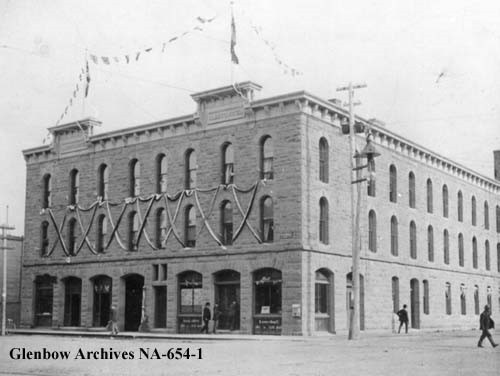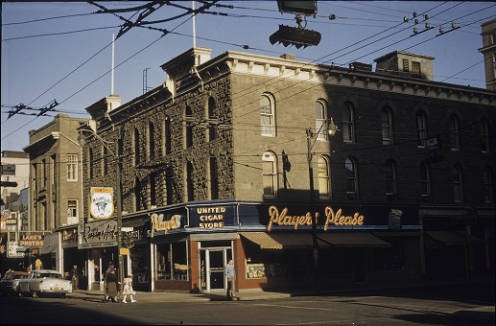Alberta Hotel
Introduction
Text-to-speech Audio
Images
Alberta Hotel circa 1893

Alberta Hotel Circa 1958

Backstory and Context
Text-to-speech Audio
The Alberta Hotel served as a hostelry for pioneers and ranchers and a gathering place for visitors to Calgary from the surrounding rural areas. Architecturally significant as one of the oldest structures in downtown Calgary and is distinguished by its use of sandstone in its construction. Construction of the original portion of the building began in 1888 and is a direct example of the changes in building practices post “Great Fire of 1886.” It is a rare example of Italianate style of design in Calgary as few remain in Calgary. The ground floor of the building has been altered while the second and third floors retain their sandstone exterior. Numerous stories are surrounding the regulars at the bar, such as Mother Fulman. She was known as “The Queen of Garbage Row” for collecting waste from hotels around the city to feed her pigs and was notable for her colourful vocabulary and ability to out-drink any man in the bar. Another regular was the deaf architect J.J. Wilson who would mistake every remark said to him as an invitation to drink. A man once attempted to rob the bar while armed with a gun. The bartender reportedly squirted the soda siphon in his hand into the robber’s eye, temporarily blinding him and allowing the bartender to grab his gun from his hand and call the police to arrest him. After the passage of prohibition in 1916, the bar was closed down after the last supper held by its final owner Charles Taprell. After its closure, the bar was kept in place and put into storage while the building was remodelled, and businesses were brought into the first and second floors.
Sources
.
NA-654-1 used with permission from the Glenbow Library and Archives
aj_25-8, Allison Jackson Photograph, Calgary Public Library
